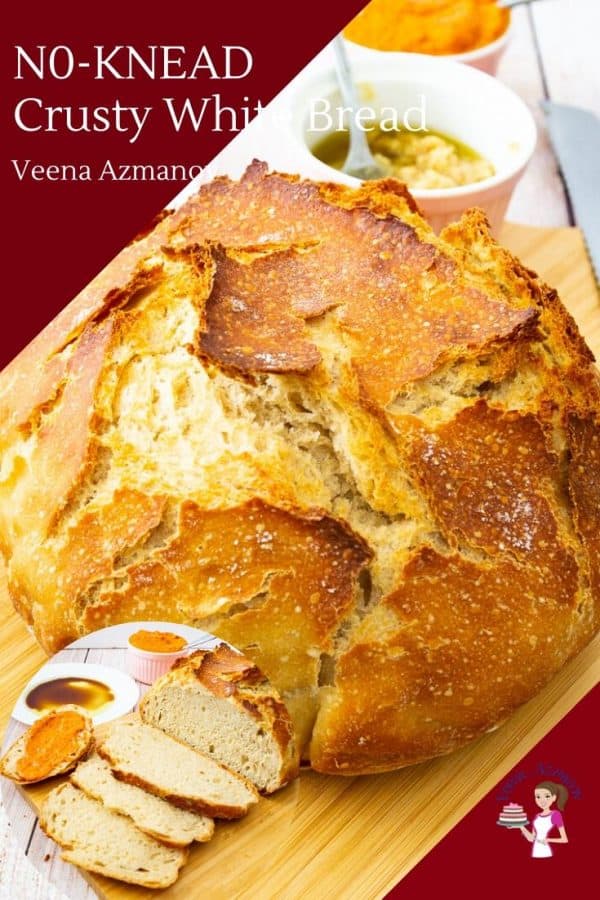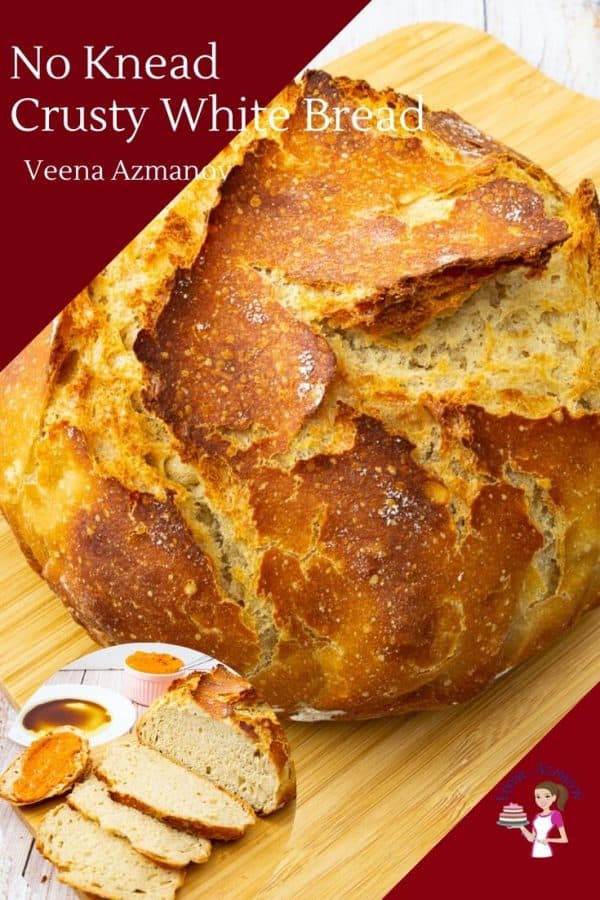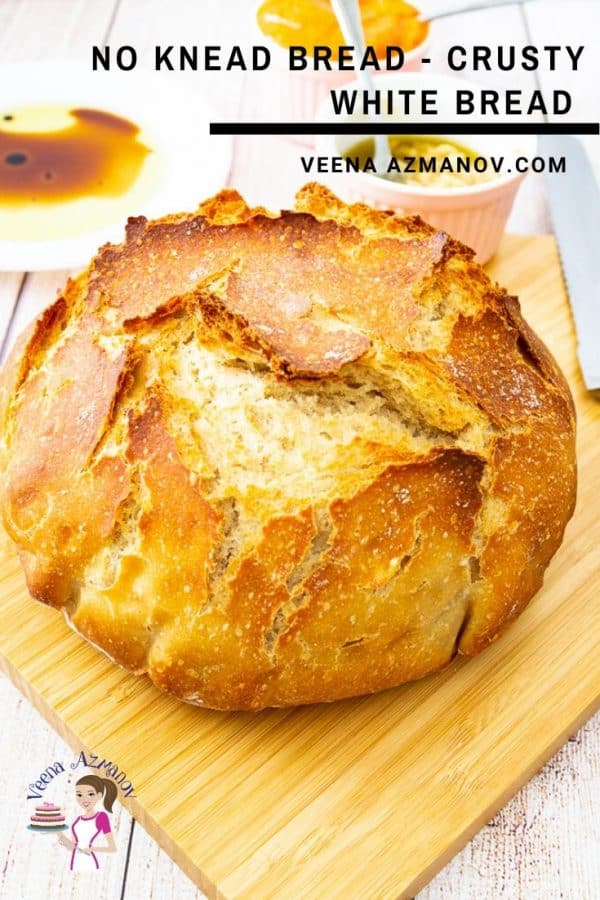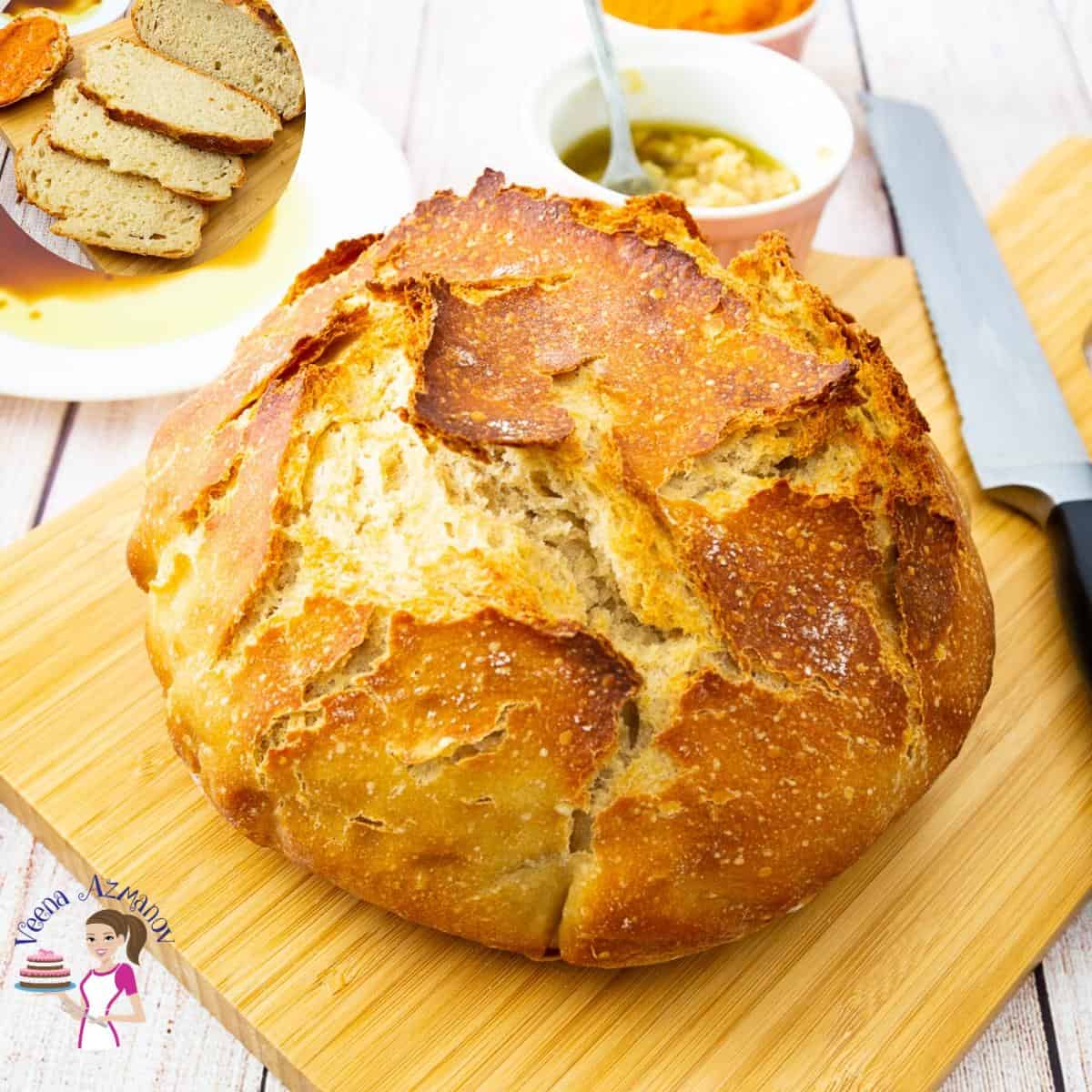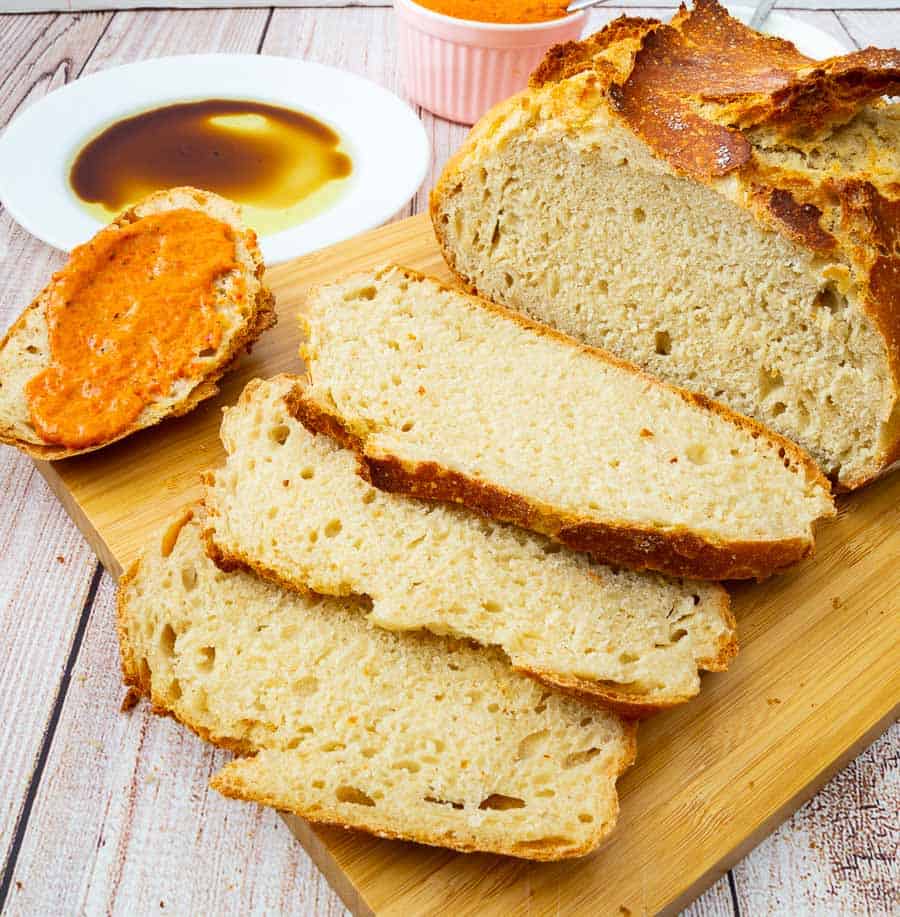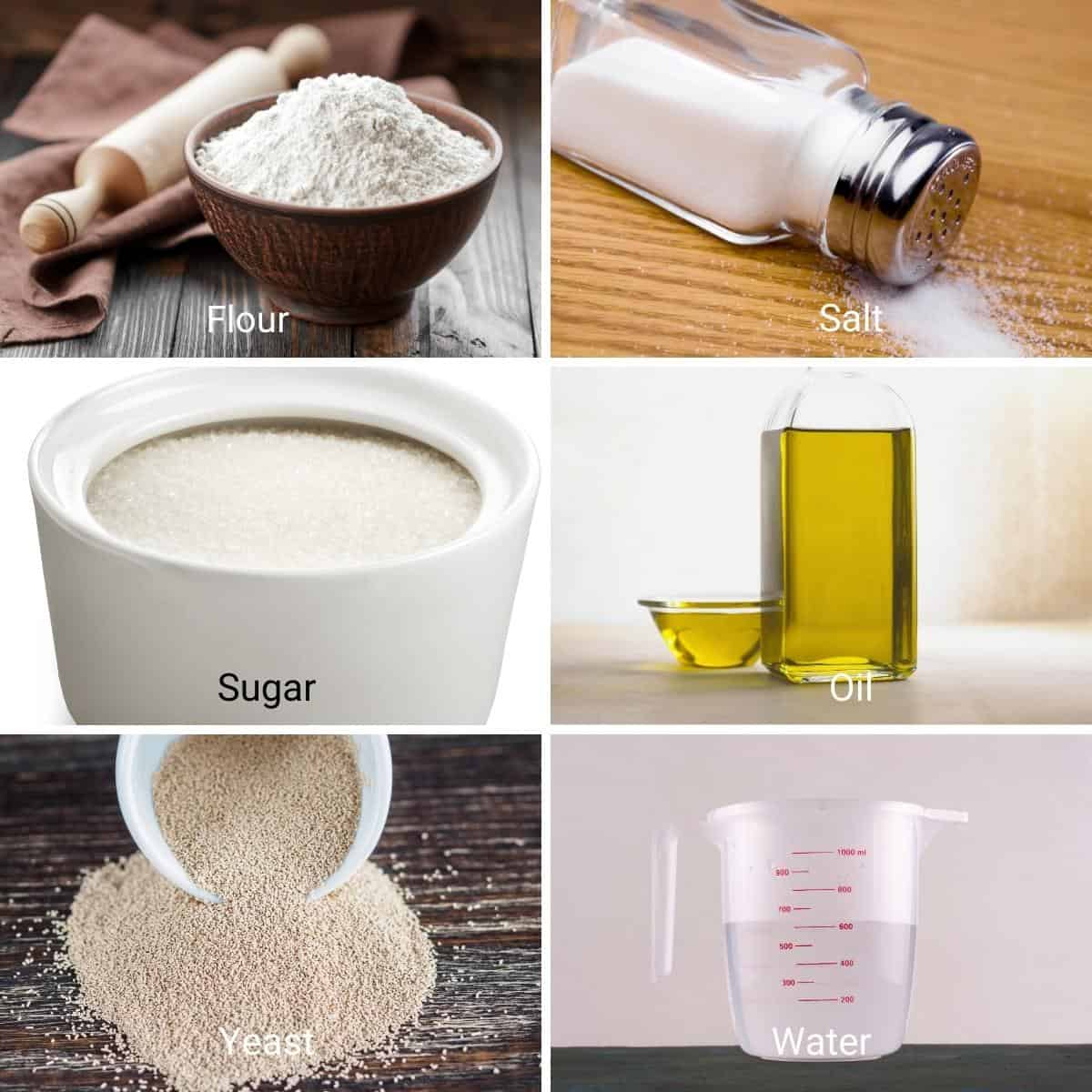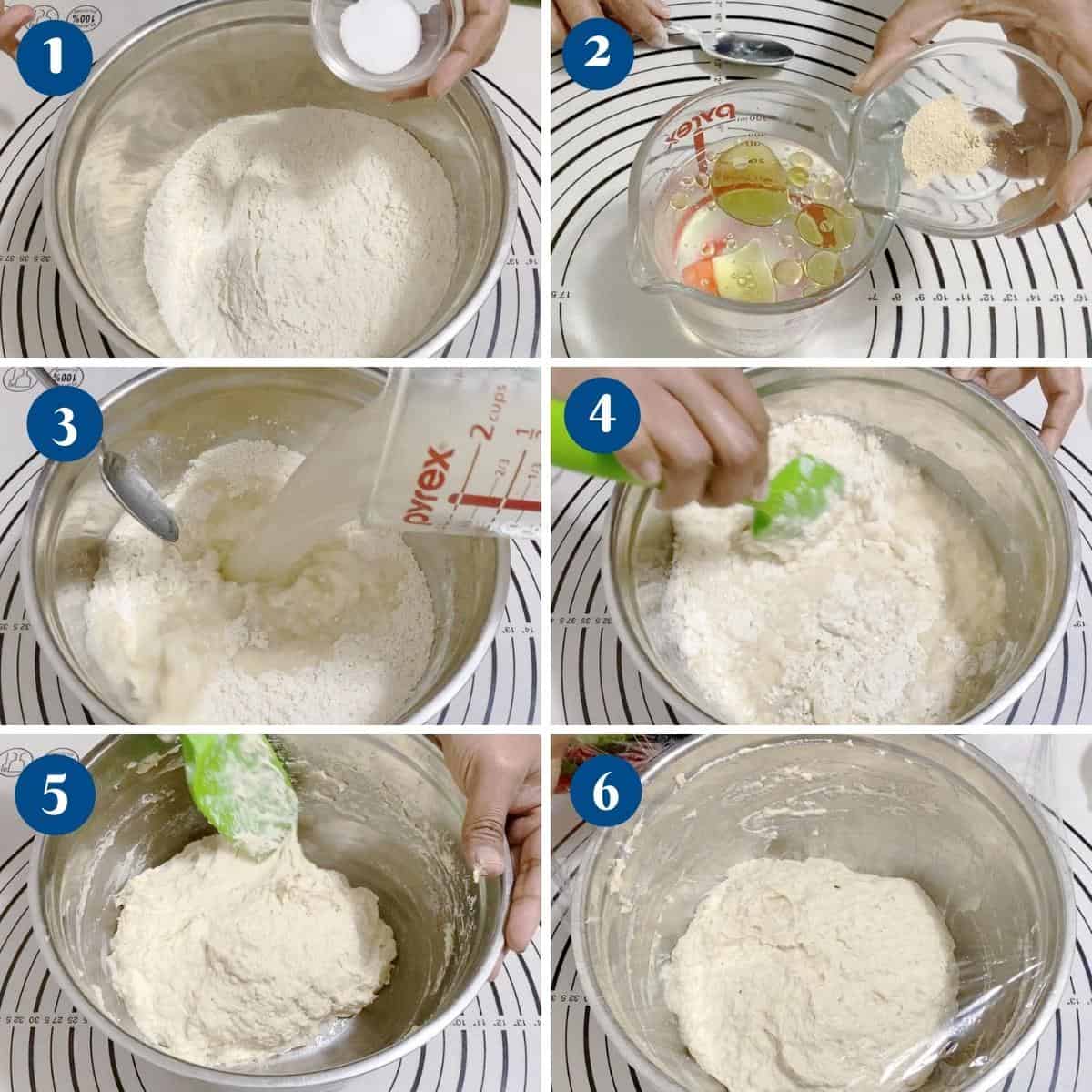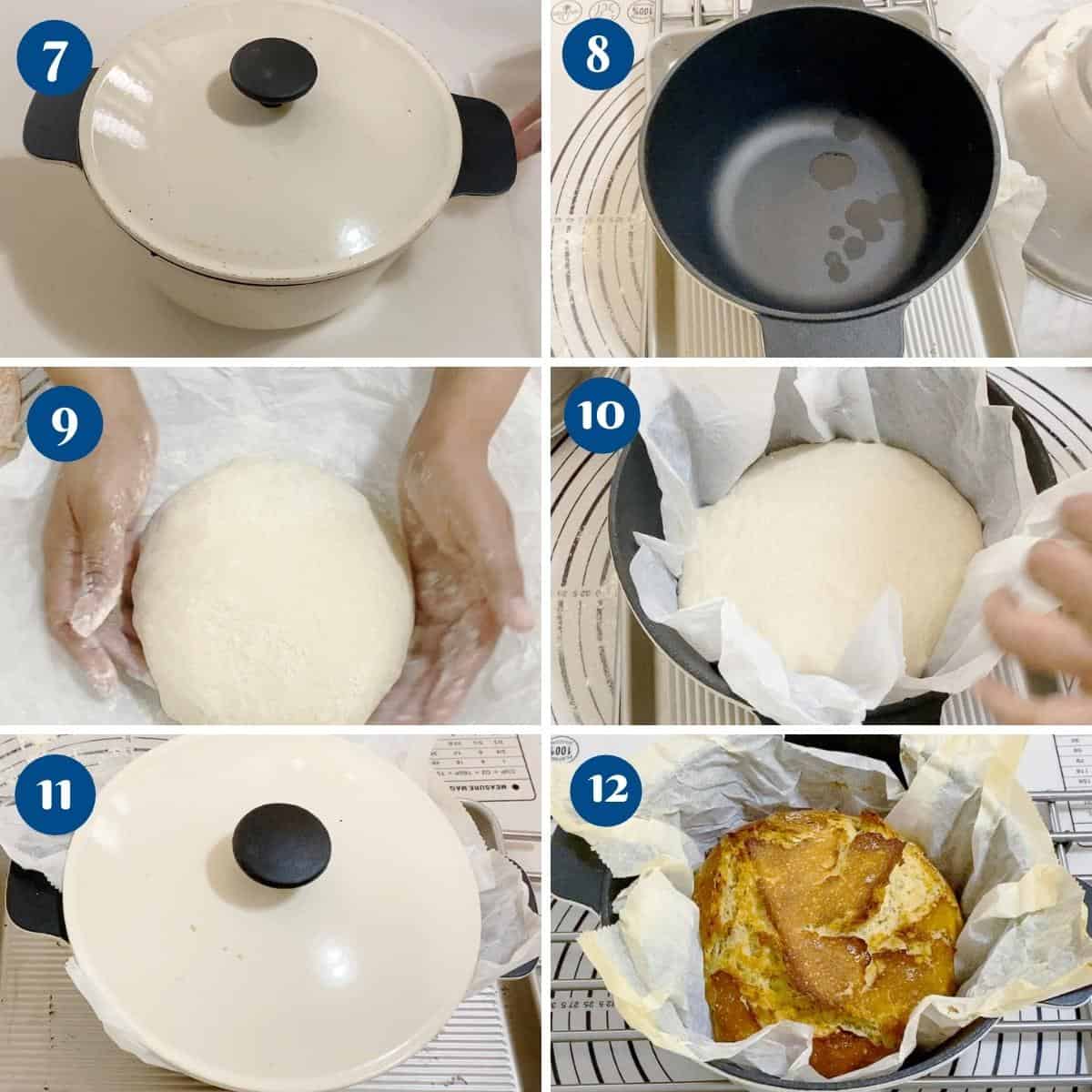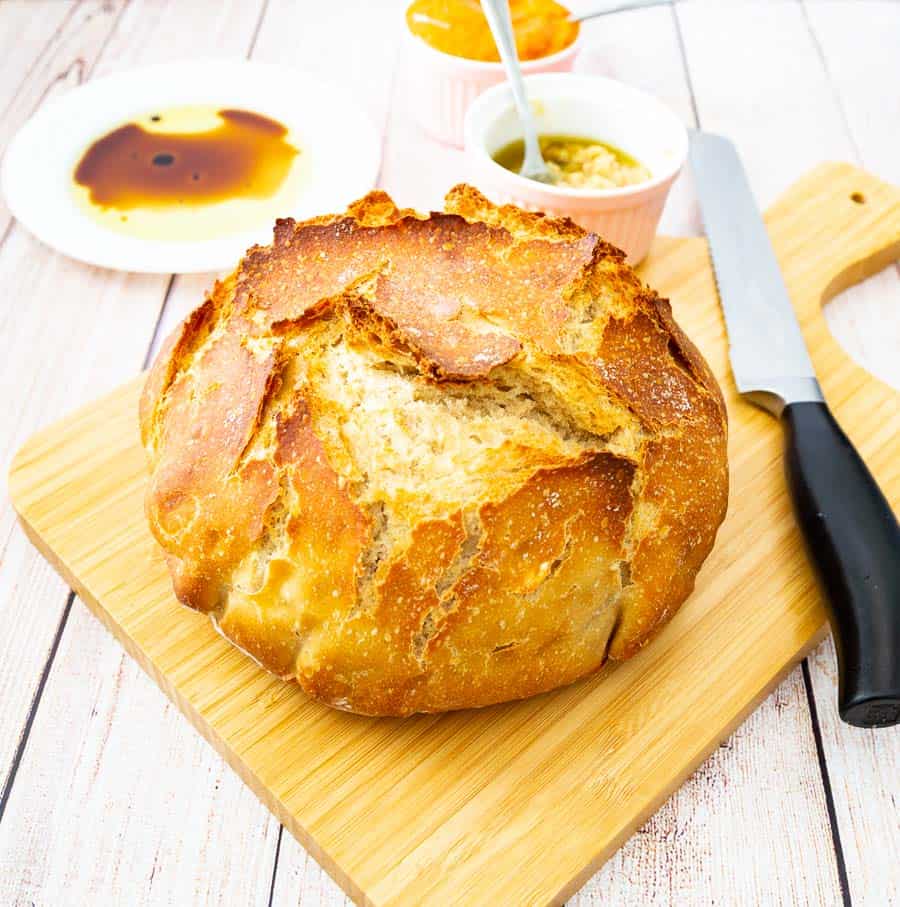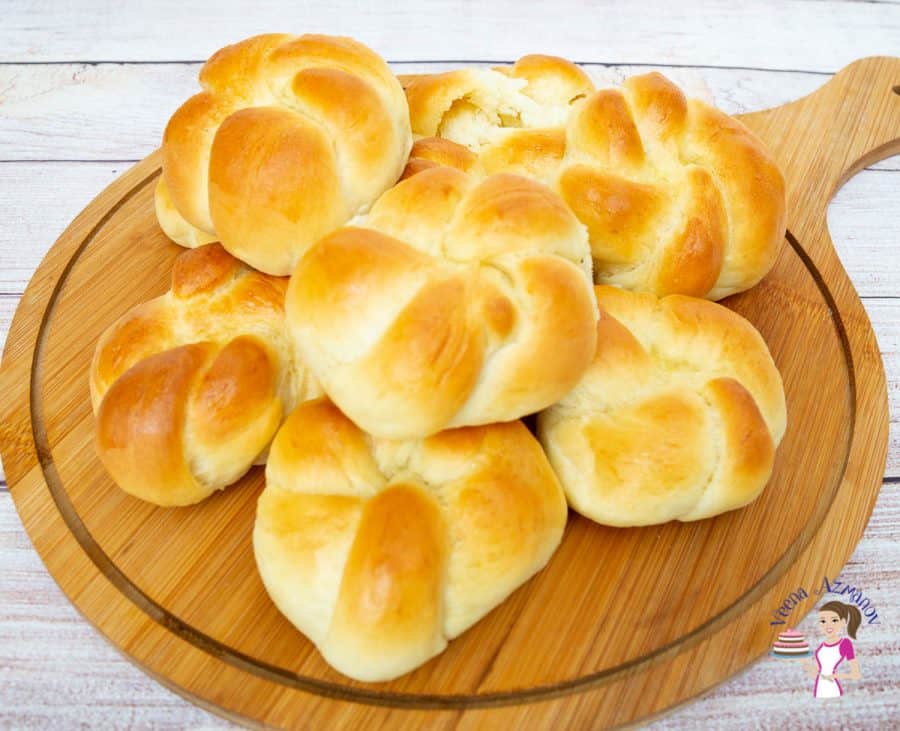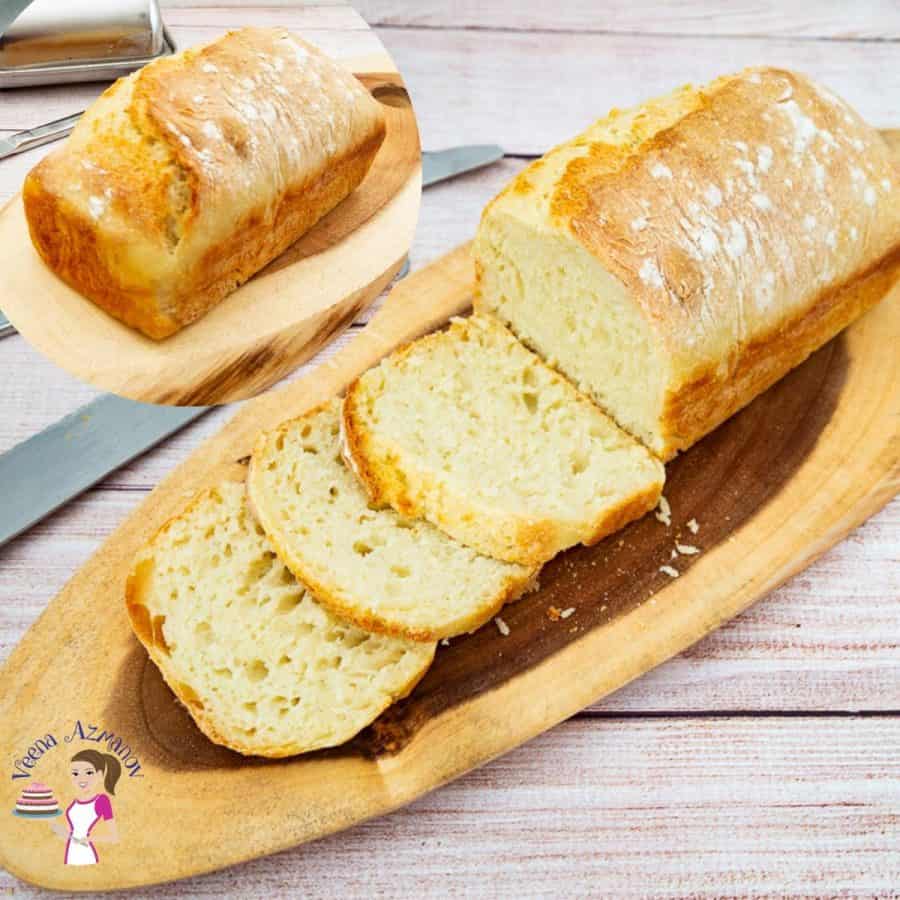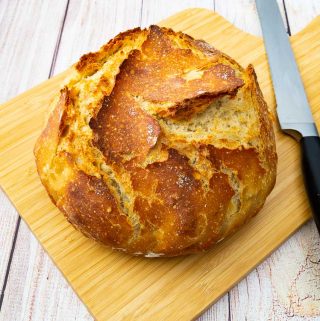If you’re looking for an easy way to bake try a no-knead bread recipe. This method was made famous by Jim Lahey, owner of Sullivan Street Bakery in New York. It’s wildly popular with almost everybody from novice to seasoned bakers and for good reason.
Why make this crusty bread?
It has a wonderful crust, but it also has a nice soft, light, and airy center. I call this my lazy bread and it’s also my favorite bread. Everyone must have some lazy bread days, right? This bread is perfect for anyone that loves bread but does not want to knead it. In fact, if you have never made bread before, this is a great recipe to start with. Very rewarding. You don’t need an electric mixer or stand mixer. Just a large bowl and wooden spoon. The dough is very forgiving. Soft, wet, and sticky, and yet that is what gives it a beautiful crust on the outside and a soft moist bread on the inside. No need to make haste – the slow proofing of four hours compared to the usual hour is what helps develop the gluten as well as flavor in this bread. The longer you leave it to proof the more flavorful the dough becomes. This one is baked in a 8-quart dutch oven, or cast iron pot which is what gives this bread that wonderful crust. But, you can also use a pyrex, enamel, or ceramic pot. The process for this bread cannot be any more simple than this. Prepare the dough – 5 minutes Place in the fridge for 4 to 6 hours Bake – 45 minutes
Ingredients and substitutes
Flour – I have always used all-purpose flour for no-knead bread in the past but bread flour is perfect for this bread. It has more gluten which makes the bread stronger, chewier and that’s what we want! Water – It is very important to use warm water, not cold or hot water. The cold water will not revive the yeast and hot water will kill the yeast. The water must be about 110F Instant dry yeast – I like to use instant yeast because I’ve always had great success with it. You can also use 1 1/4 tsp – Active dry yeast or 16 grams of fresh or baker’s yeast. Sugar – If you prefer, you can substitute sugar with 2 tbsp of honey. Olive oil – A good source of food for the yeast and adds a nice flavor as well.
Step-by-step: No Knead Bread Recipe
Dough
Dry ingredients – In a large bowl, combine flour and salt – stir to combine and set aside. Wet ingredients – In a measuring cup or medium bowl– measure the warm water, add olive oil, sugar, and yeast. Combine well. Combine wet to dry ingredients – add the yeast mixture to the flour mixture. Use a wooden spoon or spatula to combine it well making sure no dry flour is left on the bottom. This is a very wet dough, so don’t try touching it with your hand.Pro tip – the high hydration in the dough (water to flour ratio) is what gives us that crust on top and light and airy texture on the inside. Cover bowl with kitchen cloth (cotton towel) or plastic wrap. Leave at warm room temperature for an hour. Then, place in the fridge for 4 to 6 hours – up to 12 hours.Pro tip – the longer you proof artisan bread the more developed the flavor of the yeast. I would not recommend proofing longer than 18 hours.
Shape
Remove the dough from the fridge. Preheat the oven at 390°F / 200°C / Gas Mark 6 Place a 6-quarts cast iron or Dutch oven with its lid in the oven for 30 minutes.Pro tip – I like to use my 4-quart dutch oven because I like a taller loaf of bread. You can also use ceramic if you don’t have cast-iron The dough will have become three times its size but still be very soft, sticky, and elastic with lots of air pockets. Dust your work surface generously with flour. Turn dough onto the floured work surface. It is best to use a dough scraper or spatula when working with this dough.Pro tip – flour is an absolute necessity when handling this dough otherwise it will stick to your hands and you will lose a lot of volume and quantity of bread. Using a plastic scraper bring the dough together into a ball. Use flour on your hands and roll it around in the flour to prevent it from sticking to the work surface. Take a parchment paper and scrunch it into a ball. Then open it. Dust the parchment paper with enough flour to prevent sticking. Place dough onto the parchment paper seam side down.Pro tip – crunching the paper makes it easier to slide the loaf into the hot pan later. Place an inverted bowl over it while you wait for the cast-iron pan to heat up.Pro tip – dust a little flour on the top of the dough if you like a rustic loaf. Also, do not cover the dough with plastic wrap as it will stick to it.
Bake
Once 30 minutes (half hour) are up – remove the cast-iron pan or dutch oven from the oven. Pick the dough by the parchment paper and lower it into the panPro tip – DO NOT TOUCH the pan as it is VERY hot. Wear your oven gloves at all times so you don’t burn yourself. Bake for 20 minutes covered then remove the lid and continue baking for another 20 minutes uncovered. Or until bursting and golden on top. Total about 40 to 45 minutes of cooking.Pro tip – The bread will have a burst effect on the top surface (that’s normal) and it should now have a lightly golden crust on top. Alternatively, you can use a sharp knife and make a cut on top before baking). Carefully remove the pan from the oven. Lift the bread out by lifting the parchment paper. Transfer the bread on a wire rack – this will prevent the bread from getting soggy on the bottom.Pro tip – you do not want to keep the bread in the pan for long as the steam will cause the bread to become soft losing that crusty top and bottom. Let cool for at least 20 minutes before you cut into the bread.Pro tip – never cut bread while it’s hot, because steam escapes, and along with it all the moisture from the bread making it dry. Patience! ??? Enjoy!
Tips for success
This dough is a high hydration bread, which means it has to be soft, wet, and sticky. Don’t add more flour. Use warm water – not hot, not cold. The cold water will not revive the yeast, hot water will kill the yeast. Read here – baking with yeast a beginner’s guide. Flavor ideas – you can add so many ingredients to flavor this bread from chopped rosemary and thyme to olives, sun-dried tomatoes, caramelized onions, roasted garlic, parmesan to cinnamon and pumpkin spice. Do not try to knead it. Because it has too much water, and trying to knead it will be not just difficult but also not worth the effort. Don’t make haste with the proofing. We use less yeast in this bread so the proofing is slow. But it also helps develop flavor and structure. You can leave this in the fridge for up to 24 hours. When baking, the top of the bread will have a burst effect because of steam trying to escape. If you do not like the burst effect you can score the bread on top before baking. Mark an X or just two slashes. This will direct steam to come out from those designated vents you created. Pizza stone – The Dutch oven heats the bread at a very high temperature, which gives it that nice rise. While at the same time, because we use the lid, it creates steam inside the pan. This steam settles on top of the bread, which then, bakes into a nice hard crust.Alternatively, you can bake this without a Dutch oven directly on a pizza stone, and place a bowl of water at the back in the oven. This will give you a good crust, but the bread does spread giving you a shorter loaf similar to my no-knead beer bread. Your bread is done when the bottom of the laof sounds hollow or the internal temperature of the dough read 210F on an instant-read thermometer. Take the bread out of the tray as soon as it is out of the oven. This will prevent the bread from getting soggy on the bottom. Do not cut the bread at least 20 minutes after it is out of the oven. This will prevent moisture in the form of steam from escaping from the bread resulting in dry bread. Do not cover or wrap the bread with towel while it is warm. The steam will soften the crust.
Troubleshooting
Bread sunk at the bottom? – The pan in the oven must be very hot, which is why I asked you to let it heat for a minimum of 30 minutes. If the dough is put in a pan that’s not hot enough, the dough will sink. Dense dough? – The dough needs to be soft, wet, and sticky. The low yeast, high water content, and slow rise help gluten development. If you add too much flour the dough will be dense. The dough did not rise after 6 hours? You must use warm water or room temperature water. Warm water will revive the yeast, while hot water will kill the yeast and the dough will not rise. If the water was the correct temperature then check the yeast, perhaps the yeast is past its expiration date. Whole wheat bread – Unlike whole-wheat flour, white flour has gluten and it is what makes this bread light and airy. You can replace half the white flour with whole wheat as we did in our no-knead whole wheat olive bread.
Variations
Whoel wheat bread – you can subsitute 1 1/2 cup bread flour with whole wheat flour. No knead cheese bread – add 2 cups of grated cheese such as cheddar, gouda, emantle or similar to the dry flour. Wheat bran – you can coat the top of the bread with wheat bran if you substitues some of the flour with whole wheat flour. Herbed no-knead bread – add 2 tbsp of dried rosemary, thyme, oregnao to the flour.
No-Knead Sandwich Bread Easy Soft Flatbread Without Yeast (no-knead) No-Knead Beer Bread – (yeast-risen) See all no-knead bread recipes
Frequently asked questions
No-Knead Bread Recipe Without a Dutch Oven No-Knead Olive Bread and No-Knead Knotted Rolls No-Knead Pizza Dough No-Knead flatbread recipe
Did you LIKE this recipe? Save it for later. You can find my recipes on Pinterest. Follow me on Facebook, Twitter, and Instagram.Subscribe, and I’ll send you new recipes right to your inbox. Thank you for sharing - Save for later
